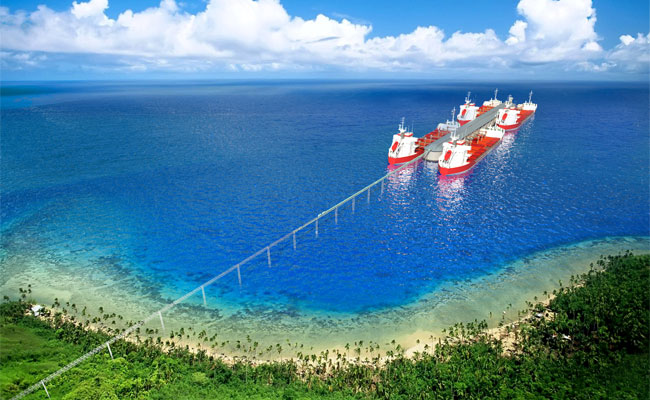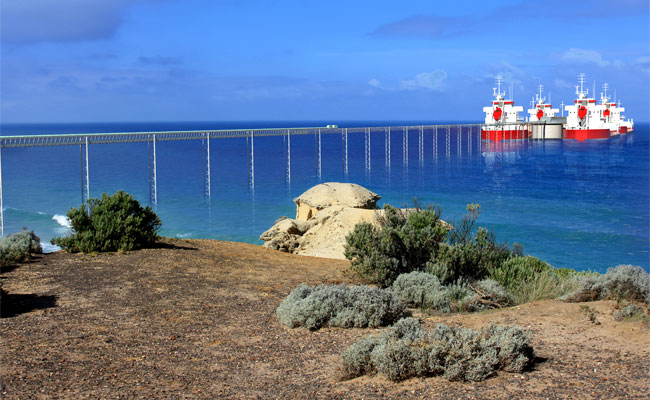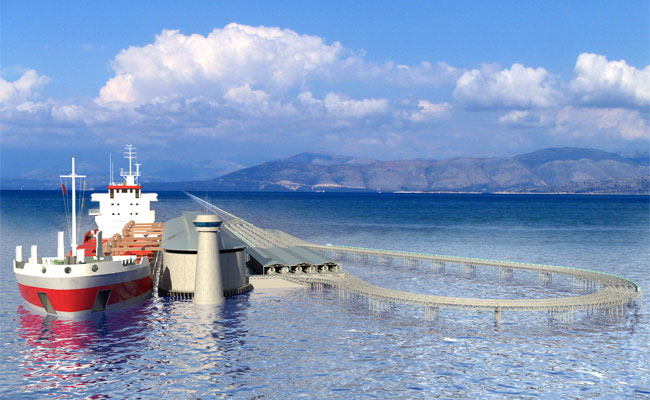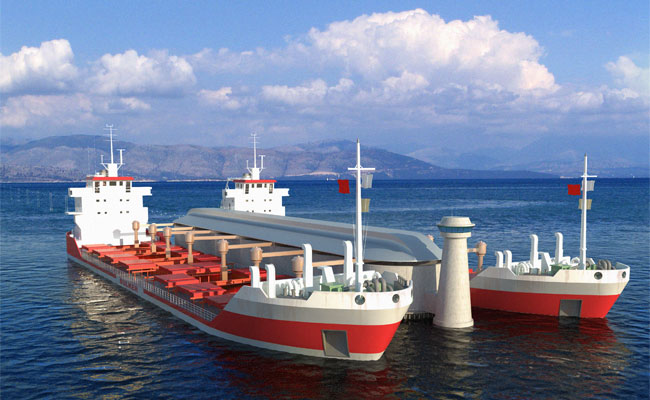|
Sphere of application
- Transshipment of cargo from SkyWay freight trains:
- in bulk carrier — for bulk cargo (coal, ore, etc.);
- in tankers — for oil and petroleum products;
- in the container ship — for containers.
- Transfer of passengers from SkyWay passenger trains in passenger ships.
Key features
- Placement of port — on the shelf in the open sea.
- The natural depth of the sea in the port is 20—30 m and more.
- Distance from the port to the shore: 1—10 km and more, as in the territorial waters and beyond.
- Transshipment volume — up to 250 million tons per year.
- The number of transit passengers — up to 1 million people a year.
- Cost of the sea port, excluding the cost of SkyWay road, rolling stock, loading-unloading terminals and infrastructure — from 10 million USD.
Competitive advantages
- The possibility of organizing berths with depth of 20 m or more by using natural depth of the sea.
- No need for large, free and expensive areas on the shore.
- Decrease of capital expenditure for construction:
- not needed dredging works;
- don't need berth wall, necessary for mooring ships and to protect the shore from erosion by the surf;
- don't need artificial channels in the port.
- Reduction of operating costs:
- by simplifying the entry of vessels with deep draft, compared with entry in the traditional ports;
- by reducing the downtime of vessels with transshipment of cargo and transfer of passengers;
- by minimizing the cost of pilotage support;
- by improving the logistics of bulk cargo while working on the scheme:
"ore deposit — SkyWay freight trains — bulk carrier"
instead of the traditional scheme: "ore deposit — rolling
stock — unloading in the warehouse on the shore — loaded
from the warehouse at the other rolling stock — transportation
to berth — overloading the hold bulk carrier";
- by reducing the consumption of energy and fuel for transhipment;
- by reducing staff costs;
- by automation of loading-unloading works;
- by reducing the volume of repair work in port.
- Improving the quality of cargo, especially bulk (ore, coal, etc.), and increase its selling prices by reducing the number of loading and unloading transshipments.
- Improving the reliability and safety of all-weather and year-round operation of SkyWay sea port compared to the traditional port on the shore.
Environmentally friendly
- Low resource consumption and low energy consumption at all stages of the life cycle of SkyWay sea port (design, construction, operation and dismantling).
- SkyWay sea port does not violate the terrain, biogeocoenosis and biodiversity neighborhood.
- SkyWay sea port does not destroy the fertile soil and vegetation.
- The absence of large-volume open warehouses and piles of bulk cargo on shore (ore, coal and others) and in the coastal zone, which would be littered and polluted the environment.
- SkyWay sea port does not prevent:
- existing natural movement of water and the natural underwater currents;
- movement and the natural migration of fish and marine animals;
- biogeocoenosis and biodiversity of the seabed in the port.
Reliability and safety
- Tsunami and tides in the open sea are not dangerous, because the wave height in them rarely exceed one meter.
- Sea port is not exposed to the surf due to his absence.
- High stability to vandalism and terrorist acts.
|
|

SkyWay sea port

Delivery of ore to the port by SkyWay freight trains

Loading on bulk carriers

Transshipment of ore in two bulk carriers at the same time
|









